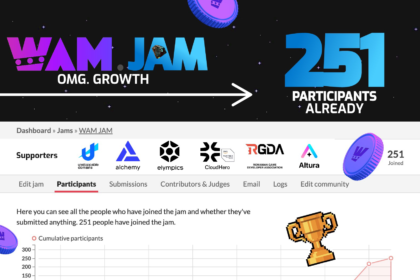Play-to-earn games were once hyped as the future of video gaming, but that destiny has yet to arrive.
While the earliest blockchain games promised players the opportunity to generate hundreds of dollars a week in profits, that promise didn’t last, and once-dominant titles like Axie Infinity faded into obscurity.
The reasons for the apparent demise of the play-to-earn model are multifaceted and include their Ponzi-like tokenomics, the often repetitive gameplay that killed any enjoyment, the questionable graphics that made it even worse, and the difficulty of onboarding new players.
Play-to-earn games are now at a crossroads. With crypto on the rise this year, there has been a resurgence of interest in the concept and numerous blockchain gaming startups have managed to attract substantial funding to bring their ideas forward. But to succeed, they’ll need to overcome a number of challenges.
Besides the unsustainable tokenomics, the lack of playability, the low quality graphics and the difficulty of onboarding, other challenges pertain to the scalability of blockchain, and the long development cycles of Web3 games that require developers to work not only on the blockchain infrastructure, but the game itself.
Can hybrid models make a difference?
None of those challenges will be easily overcome, but there is reason for cautious optimism as more developers focus on hybrid models that aim to combine elements of Web2 with Web3.
The need to be familiar with blockchain, cryptocurrencies and NFTs has proven to be one of the biggest stumbling blocks for play-to-earn games, as these requirements severely limit their potential audience. The vast majority of video game players have never used crypto, and they have no idea how to set up and secure a crypto wallet, and in some cases they’re not even sure where they can buy it. The moment a casual gamer realizes all of the hoops they’re required to jump through to get started playing, nine times out of ten they’ll simply give up and go find a different game.
But with hybridization, such problems will no longer exist.
Funtico is an intriguing project that has brought forth the idea of an “incentivized gaming platform.” It offers access to a small but growing catalog of video games spanning several genres, with a focus on enjoyability and addictiveness. The incentives take the shape of crypto, specifically its TICO token, which is the main currency for every game on its platform. But the beauty of it is that it works just like any Web2 game currency.
Players don’t have to worry about a wallet. They simply make an account, using a standard email signup process, and they’ll see their TICO token balance right there on their profile. Then, they just go to the game store and buy items as usual. But one difference they’ll notice is they can also sell those items via the in-game marketplace.
By keeping your TICO tokens linked to your profile, what you’re really doing is leaving them inside Funtico’s custodial wallet. But as players become more intrigued and learn about what TICO really is, namely a cryptocurrency, they’ll realize they also have the option to withdraw their tokens into a proper crypto wallet, and even go and sell it on a crypto exchange for real money.
This is a model that overcomes the major problem of onboarding new players, potentially enabling millions of Web2 gamers to step into the world of blockchain games.
Because Funtico is using a hybrid model, the rewards and incentives are really just the icing on the cake. There is a lot of focus on making high-quality games that are designed to get players hooked, and that means ensuring consistently entertaining gameplay.
Funtico is especially hopeful that its model might appeal to traditional video games developers. It offers a comprehensive development platform for creating video games spanning every genre, but the difference is that it also includes an integrated blockchain and tools to embed the TICO cryptocurrency and rewards-based incentives into any game. It takes a lot of the hassle out of the hands of Web2 developers, and ensures they abide by the platform’s universal tokenomics structure, which has been carefully designed to avoid falling foul of Ponzi-style economics.
By creating fun and enjoyable Web2 games and easing players into the realm of Web3 and a world of asset ownership and incentives, Funtico believes it can appeal to a much wider audience. If the platform succeeds, it could help onboard millions of new players into Web3 for the first time.
Get the balance right
The future of play-to-earn games is dependent on the industry overcoming the shortcomings that led to the downfall of the likes of Axie Infinity. Entertaining gameplay, scalability, ease of adoption and sustainable tokenomics will be the yardstick by which their success is measured. If they can crack all of these challenges, play-to-earn games stand a very good chance of becoming more mainstream in the longer term.
The hybrid approach holds a lot of promise, and can lead to the development of video games that appeal to both traditional gamers and crypto users alike. Developers need to get the right balance between playability and financial incentives. Most of all, they must remember that gamers want a game to play. Very few are looking for a part time job.
Get it right and there’s no reason to think play-to-earn games don’t have a viable long-term future.









